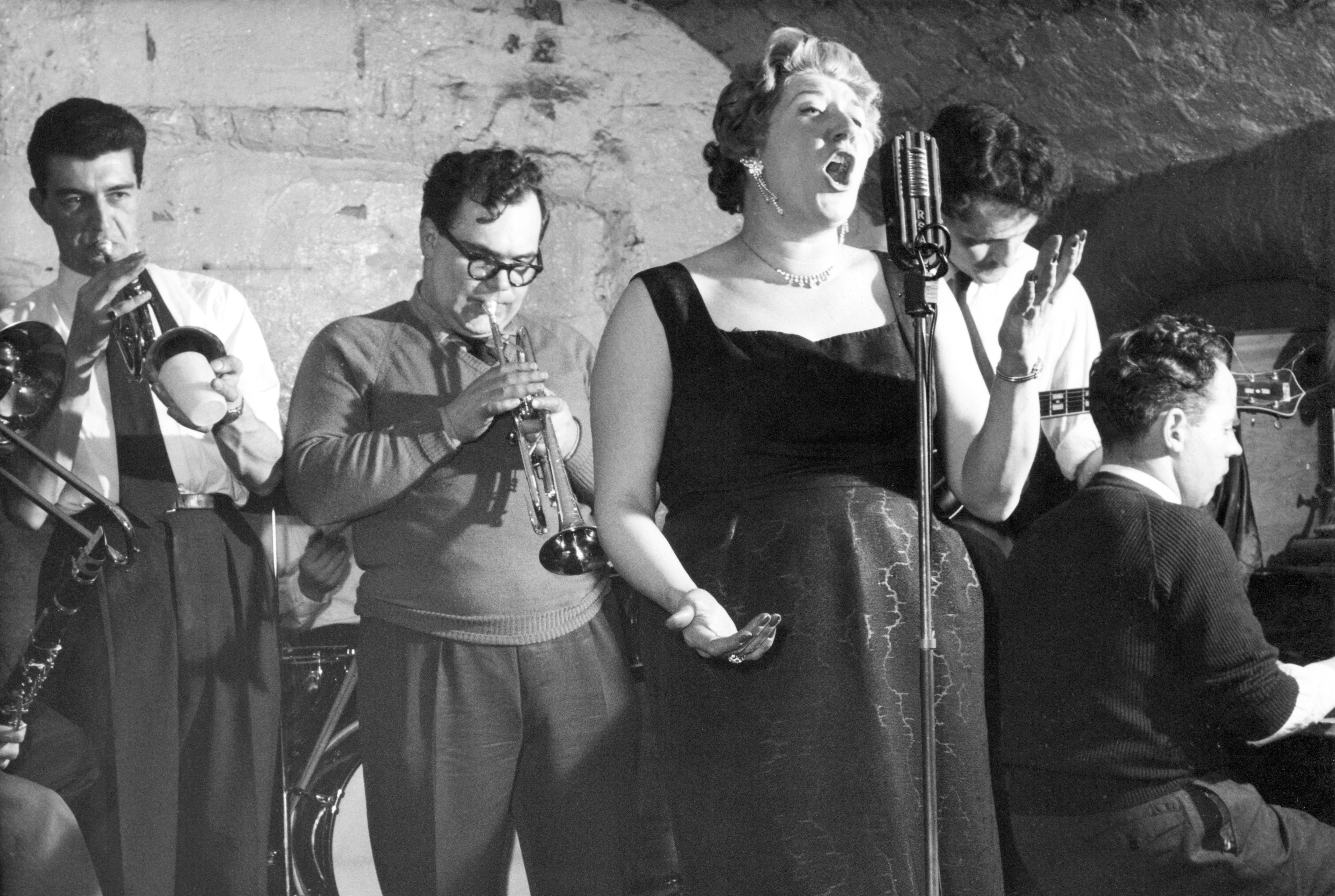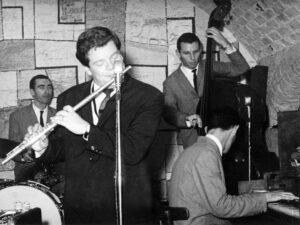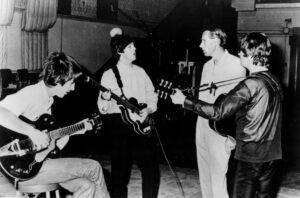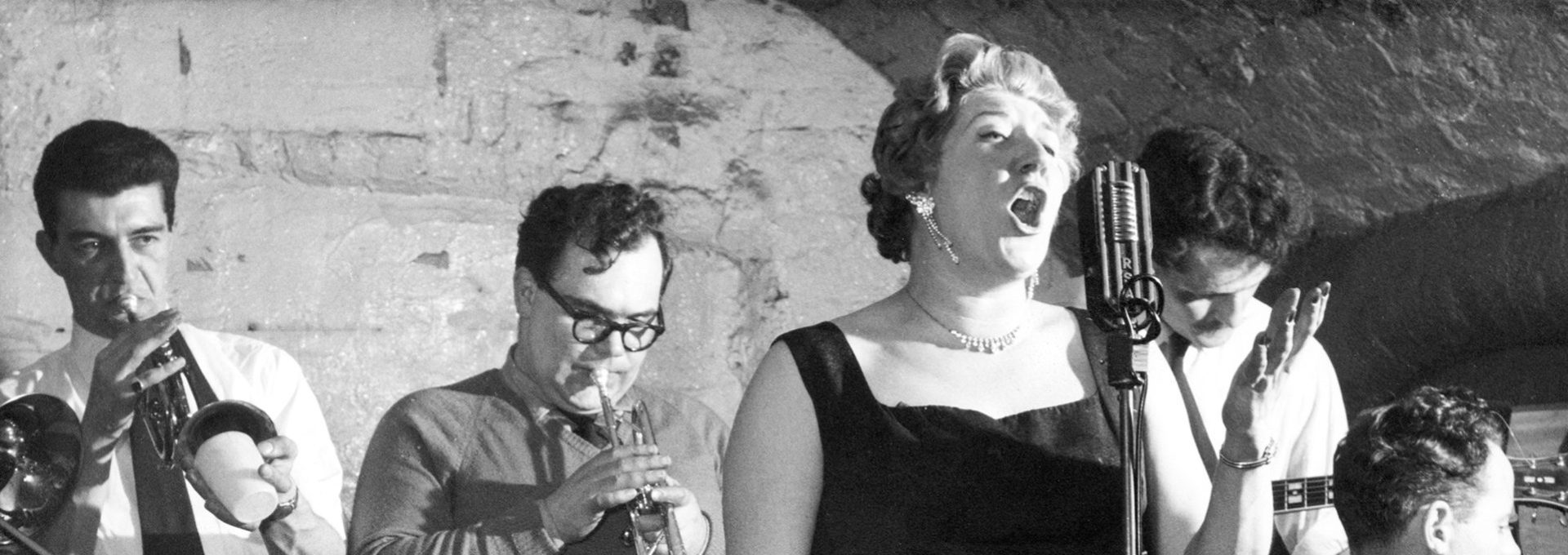International Jazz Day
We often hear about the rock ‘n’ roll heroes that inspired The Beatles – Elvis Presley, Buddy Holly, Little Richard. However, it is important to remember that The Beatles grew up with a vast, diverse collection of musical influences that would shape their own songs for years to come. Today, on International Jazz Day, we take a look at the relationship between the Beatles and the music genre of jazz.

The Cavern Club: A Legacy of Jazz
Before The Beatles graced its stage, the Cavern Club was actually a jazz club. It was named after the famous club in Paris—Le Caveau de la Huchette—and when owner Alan Sytner established the club, he intended for it to become the top jazz venue outside of London. The Merseysippi Jazz Band, the UK’s longest-standing jazz ensemble, played on the opening night on 16 January 1957. The club’s early years were marked by performances from jazz legends such as Acker Bilk, Johnny Dankworth, Ken Colyer, and Ronnie Scott (who went on to play the tenor saxophone on The Beatles’ hit single “Lady Madonna”!).
As the new decade rolled around, Sytner noticed that rock and skiffle were becoming increasingly popular and wanted to capitalise on the movement. On 25 May 1960, the Cavern hosted its first Merseybeat night, which included Ringo Starr’s original band, Rory Storm and the Hurricanes, in the setlist. However, the Cavern Club never abandoned its jazz roots, with acts such as the Temperance Seven becoming a popular mainstay. Being surrounded by so much jazz music during their 292 gigs at the Cavern Club left an indelible mark on The Beatles’ music, allowing them to embrace complex chord progressions and top-notch musicianship.

“Here, There, and Everywhere”: How Jazz Played a Role in Shaping the Beatles’ Sound
When The Beatles first formed, they were heavily influenced by the music they grew up listening to. For each of the members, the sounds of American rock and roll were crucial to their musical development. John Lennon, for example, was known to be a fan of jazz and blues artists like Big Bill Broonzy, who were celebrated for their raw, emotive style of playing. Paul McCartney grew up hearing George Gershwin, as his father Jim, an accomplished pianist, used to play “I’ll Build a Stairway to Paradise” often. George Harrison was a self-taught guitarist, and his exposure to jazz guitarists like Django Reinhardt and Chet Atkins (some of his all-time favourite guitar players) helped him develop a style that was characterised by a mixture of melodic phrasing and improvisational skill. Finally, Ringo Starr has performed at the Montreux Jazz Festival, which has hosted legends such as Miles Davis, Nina Simone, and Ella Fitzgerald. He played with his All Starr Band in 1992, and a live album was released the following year: Ringo Starr and His All Starr Band Volume 2: Live from Montreux.
When The Beatles played in Hamburg between 1960 and 1962, their roster was quite versatile, with rock ’n’ roll hits for the young partygoers and show tunes and jazz standards that appealed to the older, more sophisticated audiences. George Harrison recalls in the book The Beatles – Inside The One and Only Lonely Hearts Club Band: “We had to play eight hours a night and we started building a big repertoire… we did everything. We used to play ‘Moonglow’ [a 1922 jazz standard written by Will Hudson and Irving Mills] and lots of other old songs, whatever we could come up with in order to try not to repeat too many.” In fact, one of The Beatles’ early tunes was a 1961 cover of the jazz standard “Ain’t She Sweet,” which was written by Milton Ager and Jack Yellen.
“You Have Always Been my Inspiration”
Let’s dive into how jazz left its mark on some iconic Beatles tracks.

Honey Pie
A charming throwback on The White Album, “Honey Pie” is one of Paul McCartney’s nods to the British music hall tradition. The track features a rich blend of saxophones, including a performance by renowned saxophonist Harry Klein. While it’s rooted in vintage pop, the song has a jazzy flair that didn’t go unnoticed by George Harrison, who remarked in Guitar Player magazine in 1987:
“John played a brilliant solo on ‘Honey Pie’ from the White Album – sounded like Django Reinhardt or something. It was one of them where you just close your eyes and happen to hit all the right notes. Sounded like a little jazz solo.”
Got to Get You Into My Life
This bright, Motown-infused Revolver highlight features a classic jazz-style brass band. Peter Coe, one of the saxophonists on the track, recalled how “The Beatles wanted a definite jazz feel”. Indeed, this is reflected in the personnel. Paul McCartney had become a fan of English jazz musician Georgie Fame after he heard him around the London nightclubs. For “Got to Get You Into my Life”, Paul hired two members of Fame’s group the Blue Flames: Jamaican Eddie Thornton and Peter Coe.
Catswalk
During his time with The Quarrymen, Paul McCartney composed a jazz-style instrumental called “Catswalk,” which was never officially recorded by The Beatles. Written around 1959, it appeared on a list of potential song titles compiled the following year by Stuart Sutcliffe, as the band prepared for their first trip to Hamburg.
In December 1962, The Beatles recorded a rehearsal at the Cavern Club in Liverpool, likely intended to showcase original material for EMI and publisher Dick James. “Catswalk” was among the songs played, and at that time, McCartney had hopes that guitarist Bert Weedon might record it. However, by then, the tune had already been picked up and released by another act.
McCartney, who was acquainted with bandleader Chris Barber—known for playing trombone with his traditional jazz group, The Chris Barber Band—offered him the song in 1967. The group first recorded “Catswalk” at London’s Marquee Club in July of that year, but McCartney felt the result could be improved.
A new session was held on July 20, 1967, at Chappell Recording Studios on Maddox Street, London. The track was retitled “Catcall” and given a bold, theatrical arrangement, complete with a chorus of literal catcalls. Among those participating in the lively recording were McCartney himself and his then-partner, Jane Asher.
“And In The End…”
In conclusion, The Beatles’ connection to jazz is an often-overlooked aspect of their musical legacy, but it’s clear that jazz played a crucial role in shaping their sound. From the club where they first found their voice – the Cavern Club – to their later studio experiments, The Beatles absorbed the improvisational spirit, harmonic complexity, and rhythmic innovation of jazz, blending it seamlessly with their own musical ideas.
